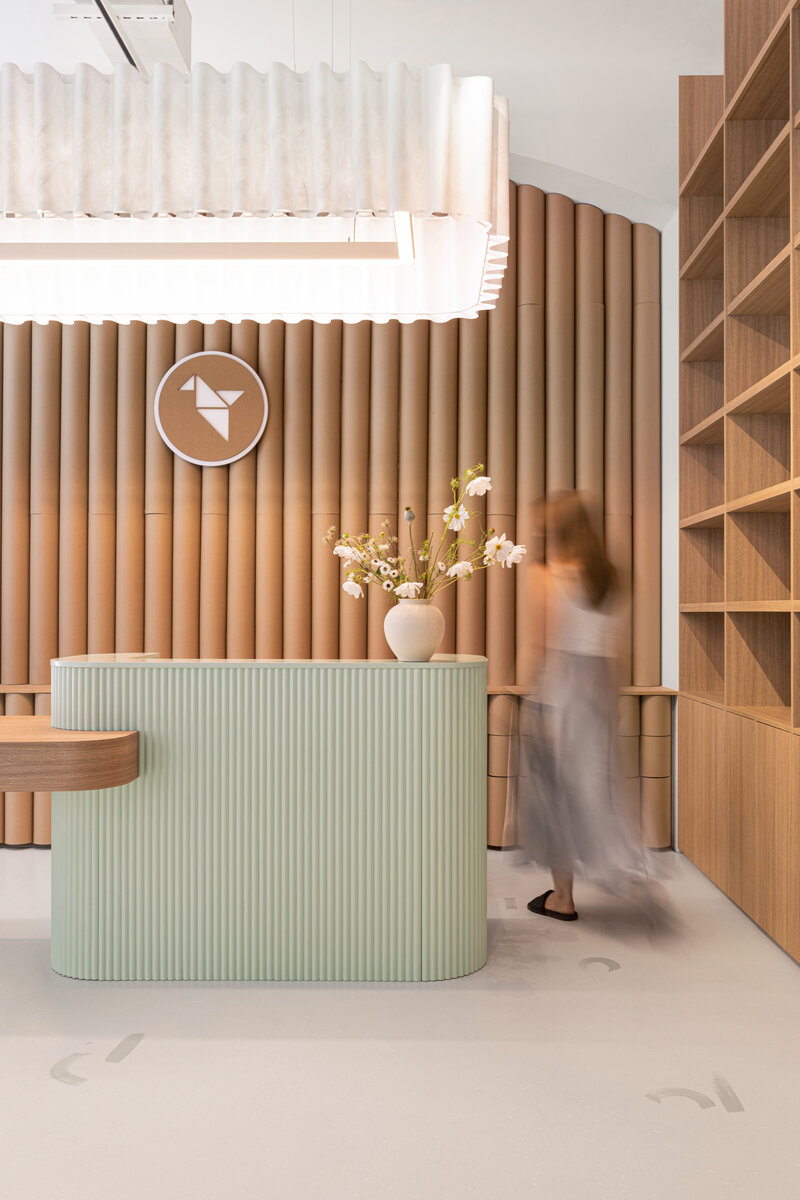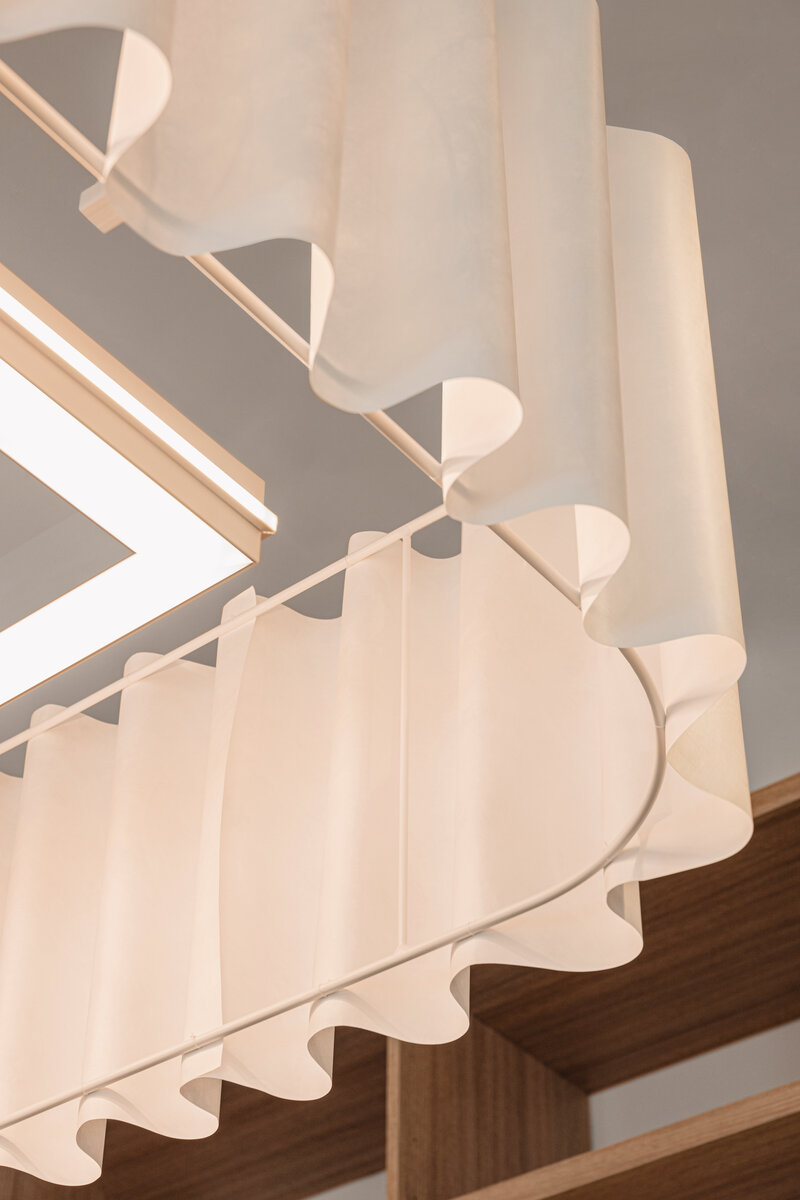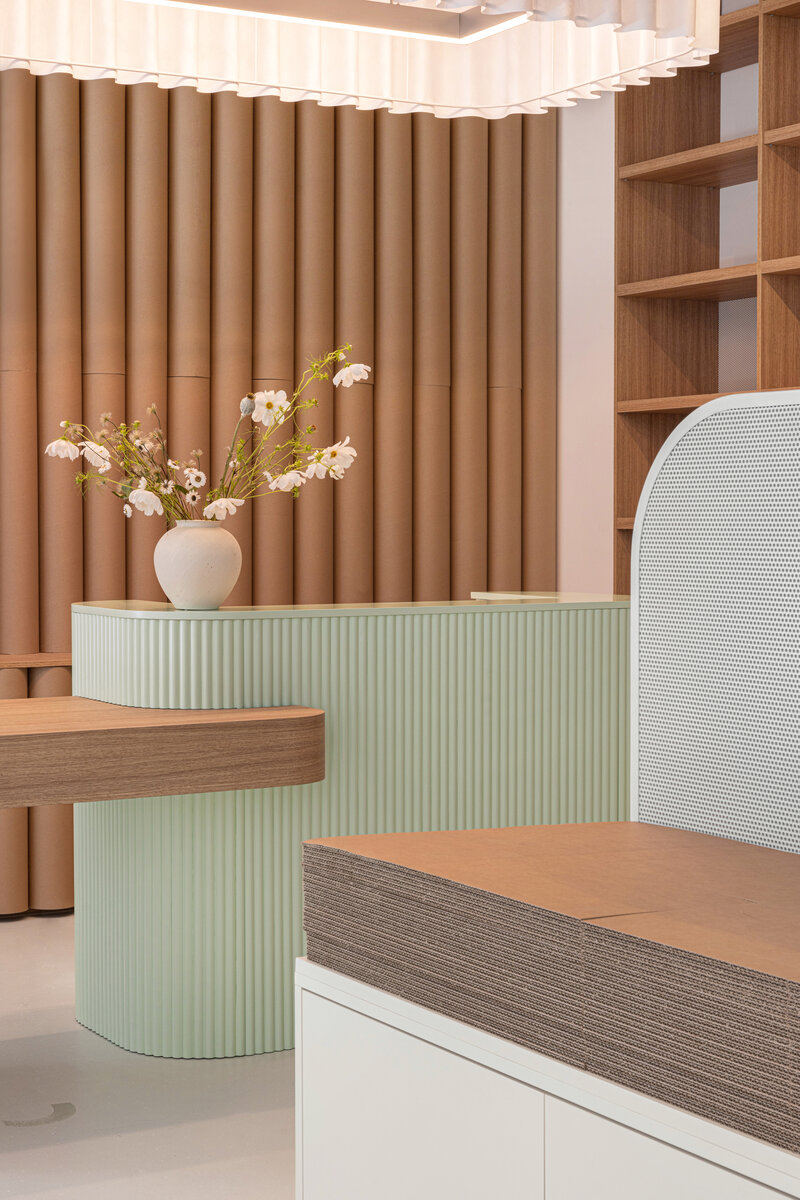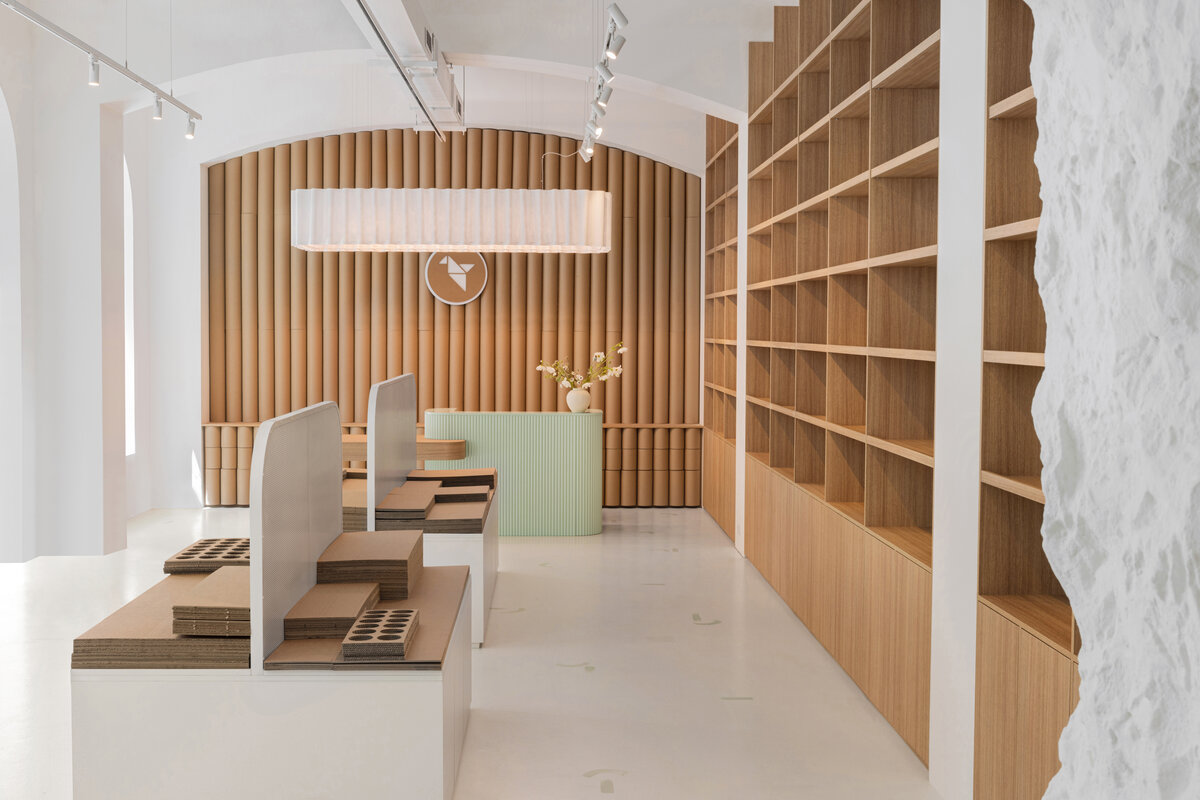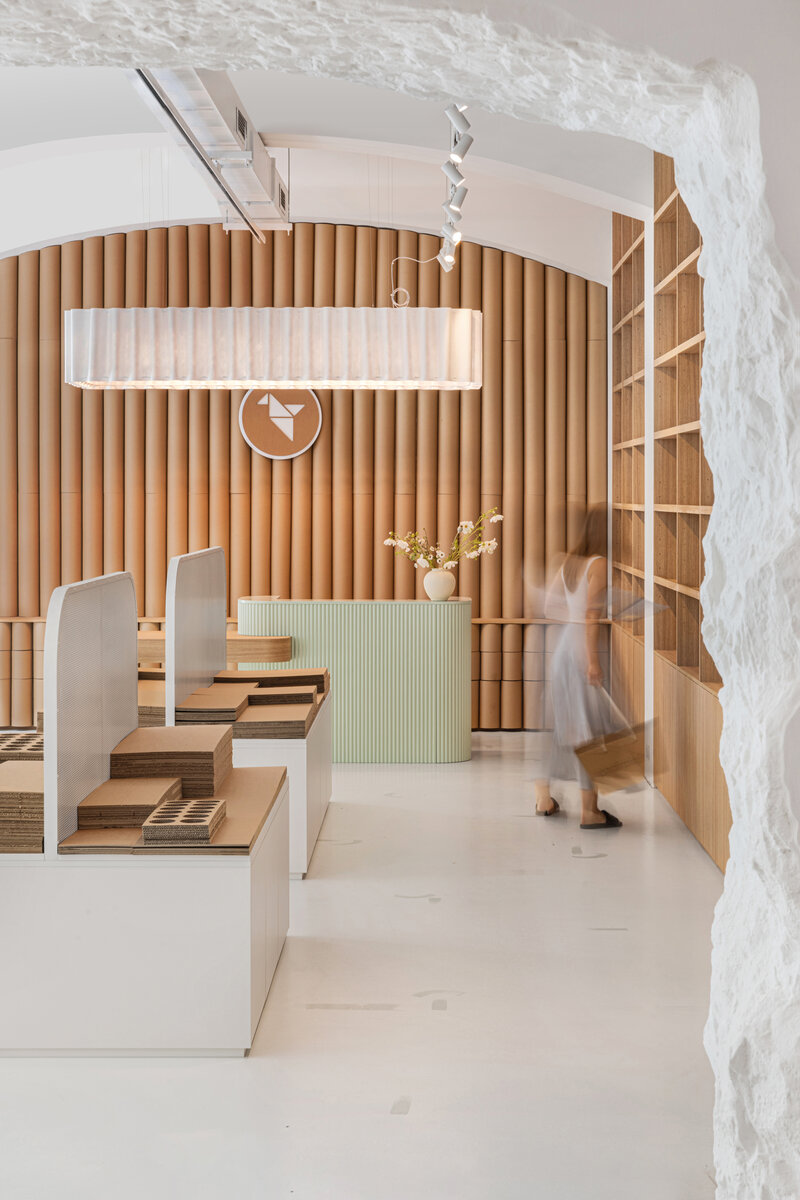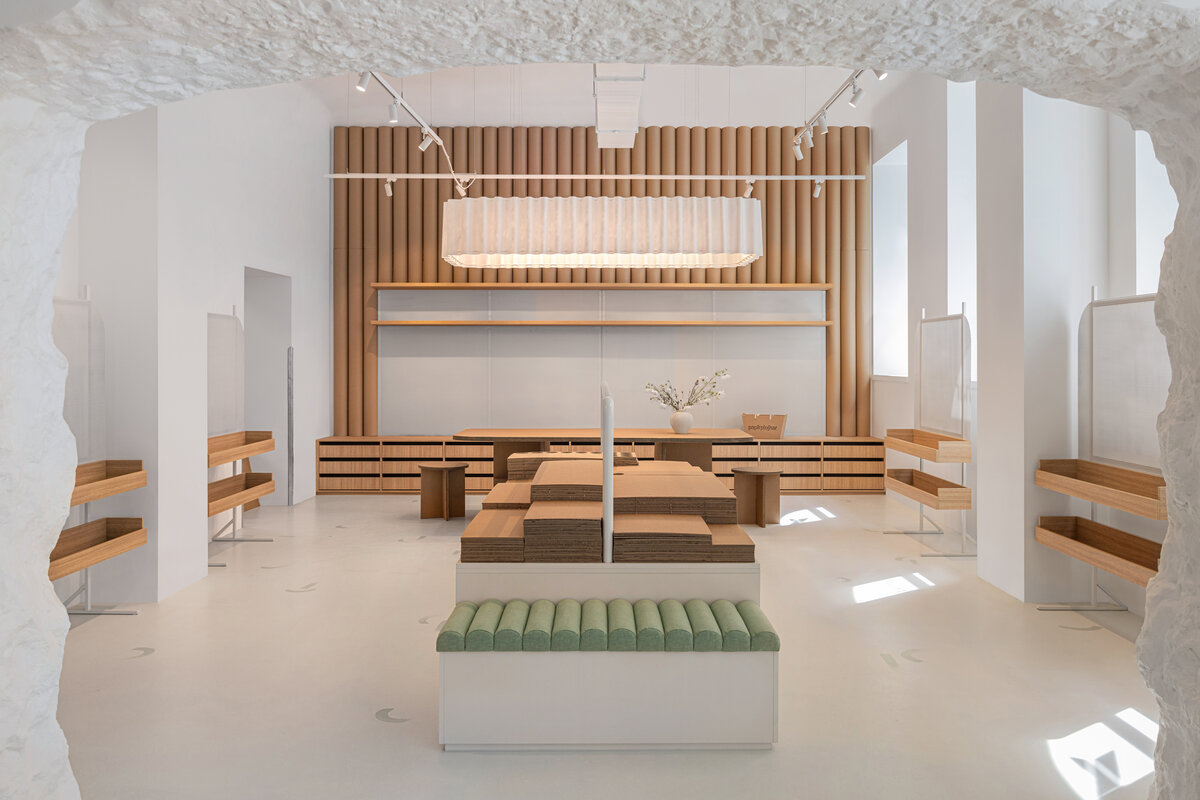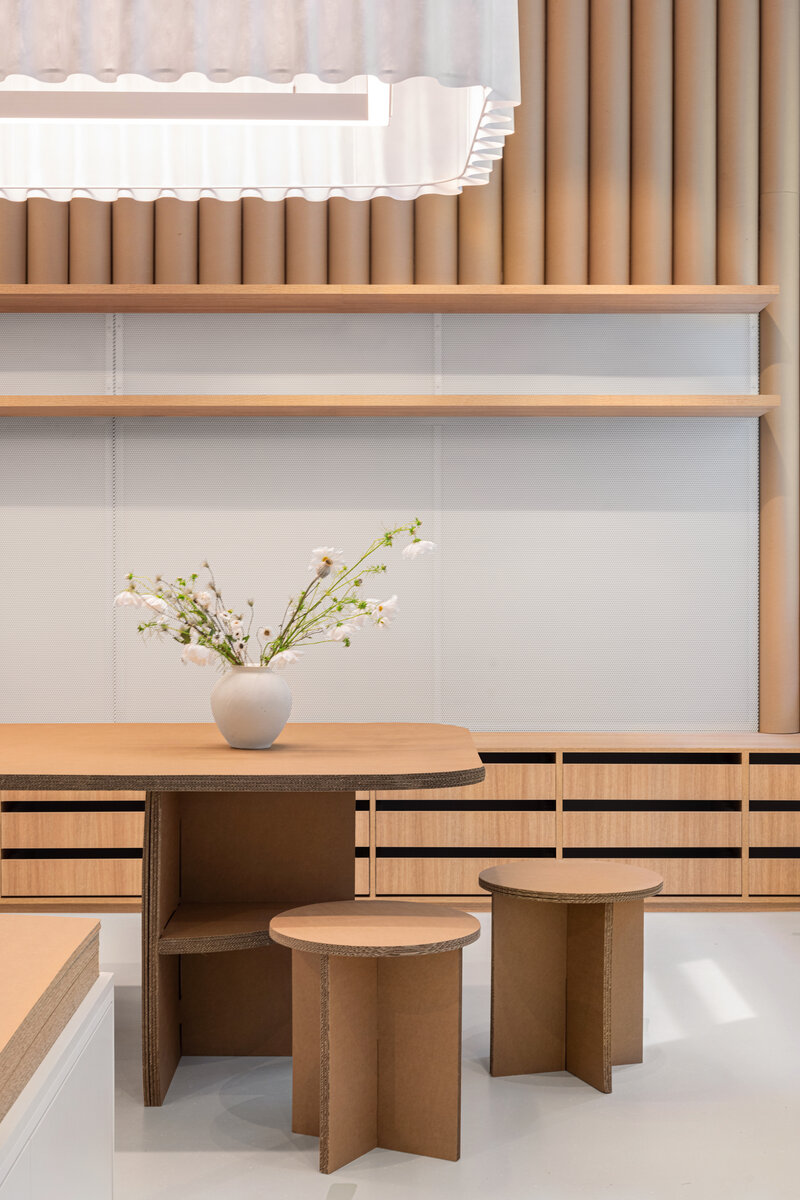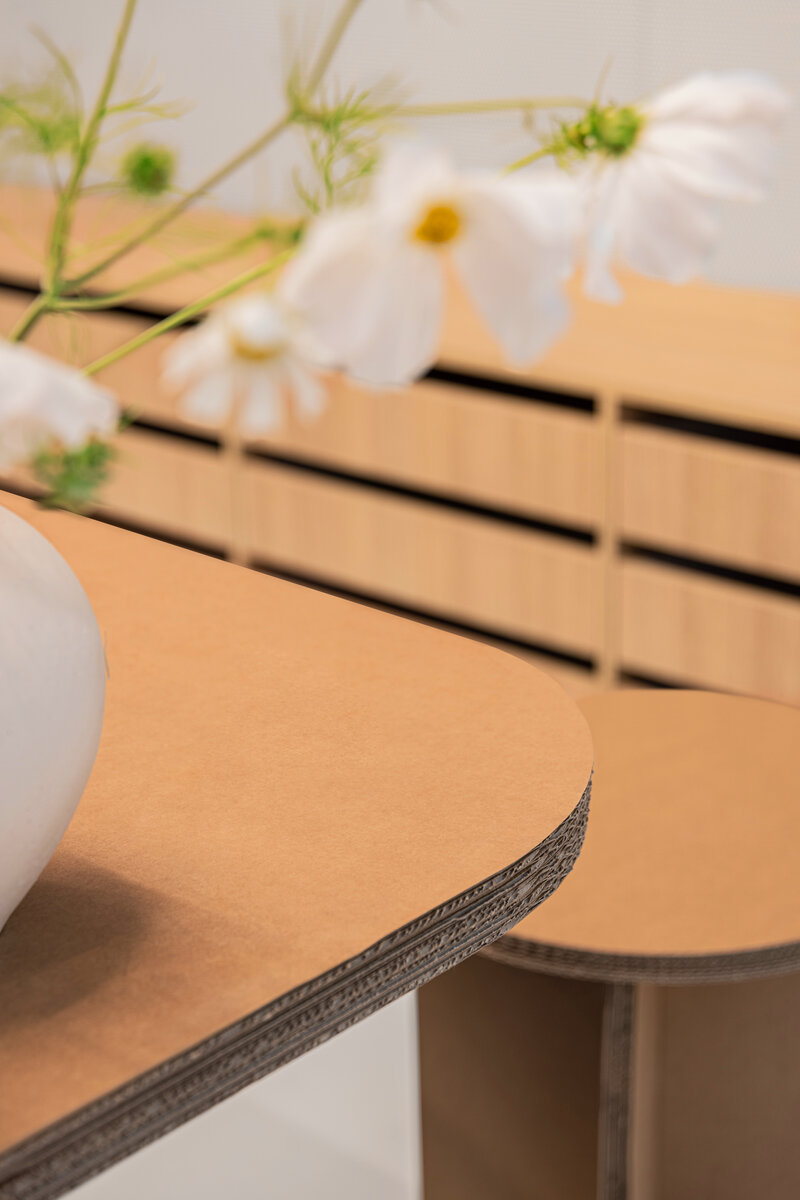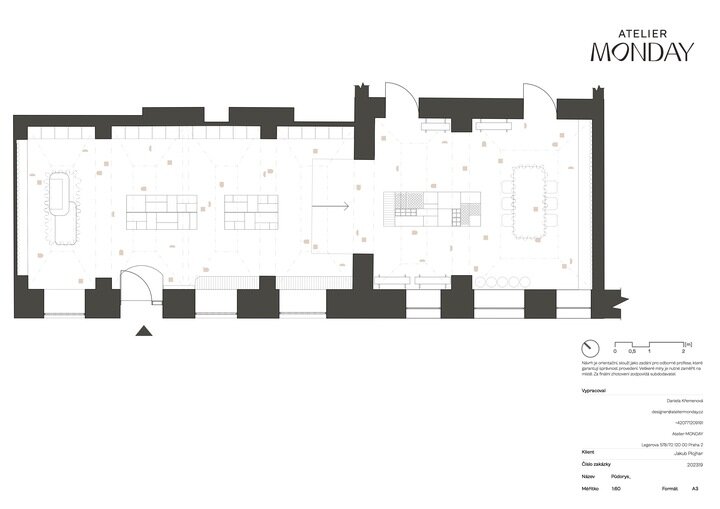| Author |
Anna Teresa Hamerská, Tereza Ptáček, Daniela Křemenová, Lucie Škvarková |
| Studio |
Atelier Monday |
| Location |
Jindřišská 16, vstup z ulice Politických vězňů Nové Město, Praha 1 |
| Collaborating professions |
Papírnictví |
| Investor |
Jakub Plojhar, Papír Plojhar |
| Supplier |
Stolařství Kraus - zabudovaný nábytek
Stinn - kovové komponenty
Lappa - lustry na míru
Na/Lití - podlaha |
| Date of completion / approval of the project |
August 2023 |
| Fotograf |
Adriana Fialová |
Opened in August 2023, the concept store Papir Plojhar in Jindřišská Street brings to Prague a novel stationery from the Atelier Monday workshop. It embodies the beauty of paper through structure and shapes inspired by cardboard. The Atelier has managed to combine the tradition of the family company Plojhar with contemporary design and an original method of furniture production.
The family-owned company Papír Plojhar has been active on the paper market since 1888. Five generations of the family business were based in České Budějovice, but under the leadership of Jakub Plojhar, the company decided to bring its Papir to Prague and offer customers an unusual shopping experience. The task was to create a stationery shop that would offer customers a shopping experience, goods that you would not find in any other stationery shop and at the same time refer to the tradition of the family business.
It is already clear at first glance that paper plays a major role in the new shop. It naturally became the main source of inspiration for the designers from Atelier Monday. The selected elements in the interior, whose rounded shapes are based on the structure of cardboard, refer to the story of paper. When cut open, it reveals rounded joints resembling ripples that permeate the design. As paper is not commonly used in interiors, it was necessary to take a completely different approach to the design and work very closely with the company and its representatives. Ideas on how to incorporate the material into the interior were born as the designers became familiar with paper and the possibilities of processing it in the company itself. The company is also active in the cardboard market, so Atelier decided to take an unconventional route and have a large part of the furniture manufactured directly at the company's headquarters. The studio supplied drawings of the furnishings, which were then made by cutting to size from cardboard with a plotter. The interior of Papír Plojhar thus combines the tradition of a family business with the unusual technology of furniture production. The centre of the shop's life is to become a cardboard table designed for creation and creative workshops, which Jakub Plojhar and his team plan to organise in Papír. The chairs and displays for displaying products are also made of cardboard. The halved cardboard tubes then become an unusual decoration for the wall behind the counter. The ambient light installation by the design duo Lappa, made of Tyvek, is reminiscent of the lightness and fragility of paper.
Green building
Environmental certification
| Type and level of certificate |
Neucházíme se o tuto cenu - některé odpovědi bychom označily jako "nevím", jelikož se jedná o vsazený interiér
|
Water management
| Is rainwater used for irrigation? |
|
| Is rainwater used for other purposes, e.g. toilet flushing ? |
|
| Does the building have a green roof / facade ? |
|
| Is reclaimed waste water used, e.g. from showers and sinks ? |
|
The quality of the indoor environment
| Is clean air supply automated ? |
|
| Is comfortable temperature during summer and winter automated? |
|
| Is natural lighting guaranteed in all living areas? |
|
| Is artificial lighting automated? |
|
| Is acoustic comfort, specifically reverberation time, guaranteed? |
|
| Does the layout solution include zoning and ergonomics elements? |
|
Principles of circular economics
| Does the project use recycled materials? |
|
| Does the project use recyclable materials? |
|
| Are materials with a documented Environmental Product Declaration (EPD) promoted in the project? |
|
| Are other sustainability certifications used for materials and elements? |
|
Energy efficiency
| Energy performance class of the building according to the Energy Performance Certificate of the building |
A
|
| Is efficient energy management (measurement and regular analysis of consumption data) considered? |
|
| Are renewable sources of energy used, e.g. solar system, photovoltaics? |
|
Interconnection with surroundings
| Does the project enable the easy use of public transport? |
|
| Does the project support the use of alternative modes of transport, e.g cycling, walking etc. ? |
|
| Is there access to recreational natural areas, e.g. parks, in the immediate vicinity of the building? |
|

